BIRDS AROUND BANNING
BALD EAGLE
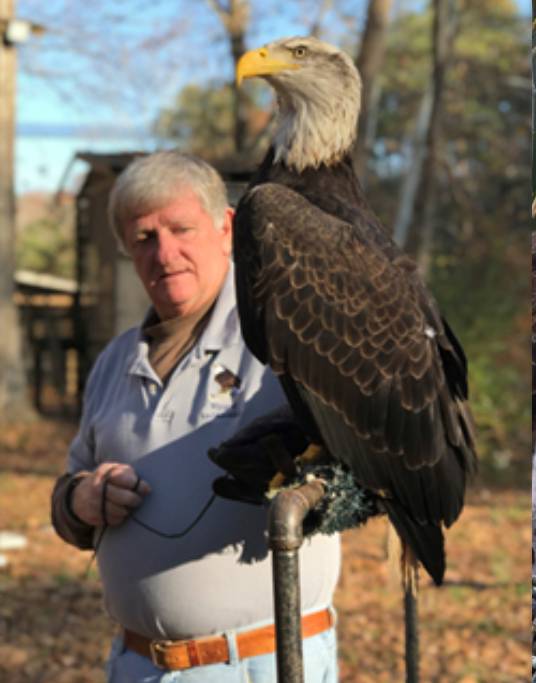
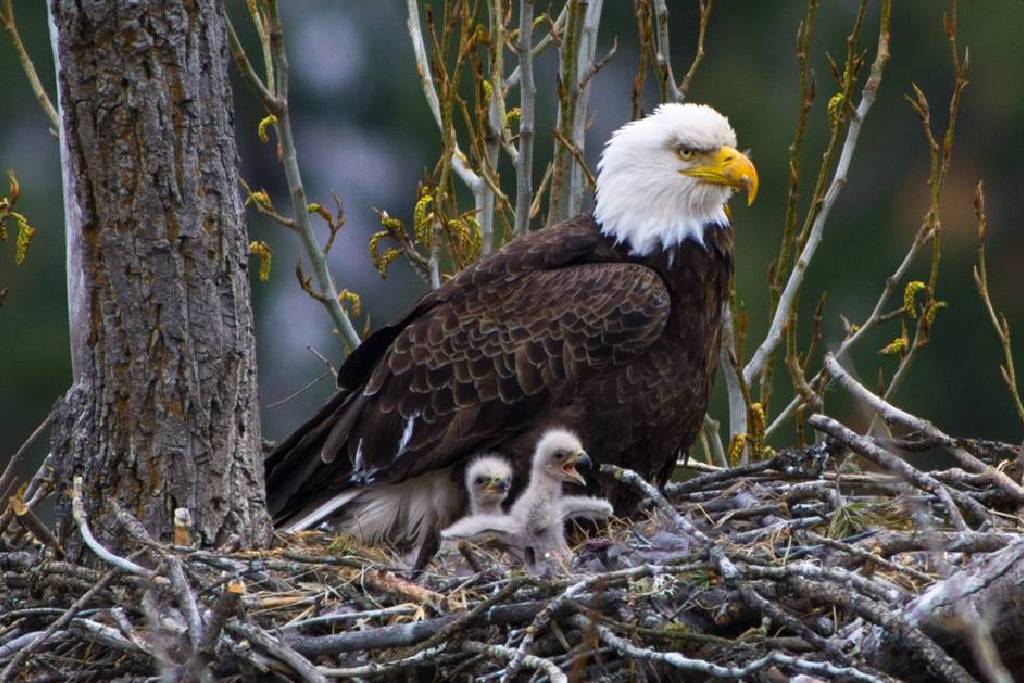
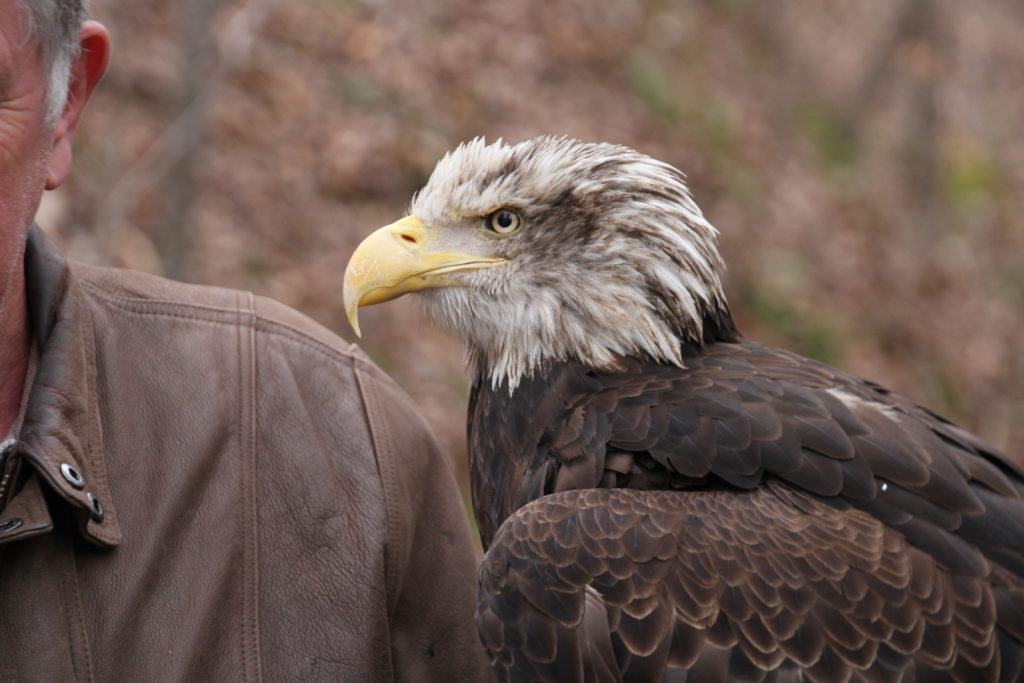
The Bald Eagle (Haliaeetus Leucocephalus) only lives in North America and has been America’s national emblem since 1782. Bald Eagles are distinguished by their bright white head and tail feathers, however, they don’t get their white head feathers util they are around 5 years old. Bald Eagles can grow to be very large birds with a wing span reaching over 7 feet wide! The female Bald Eagle is actually larger than the males.
Bald Eagles eat mainly fish, small mammals, turtles, snakes, rabbits, and even carrion. The Bald Eagle mates for life and can live 20 to 30 years in the wild. They also build the largest nests of any North American bird. The nests will be used over and over again as long as the tree can support additional “remodeling” to the nest. Nests can be 5-6 feet in diameter and weigh over 2000 lbs! The largest nest ever recorded was 20 feet deep and 9.5 feet wide and weighed over 2 tons!
Did you know Bald Eagles can swim? If a Bald Eagles catches a heavy fish, it will use it’s wings to row itself to shore! They also have extremely good eyesight and have a third eyelid called a nictitating membrane which helps protect their eyes by keeping them clean and moist. The Bald Eagle is a very impressive flyer with the ability to dive at 100 mph and can fly 30 to 60 mph.
Bald Eagles are commonly misconstrued in movies by having a high pitched piercing call. That is actually the sound a red tailed hawk makes. The Bald Eagle actually makes a whinny sound that comes out like a high pitched giggle! Bald Eagles were once very endangered, but since the 1970’s they’ve made a tremendous come back!
ROBIN

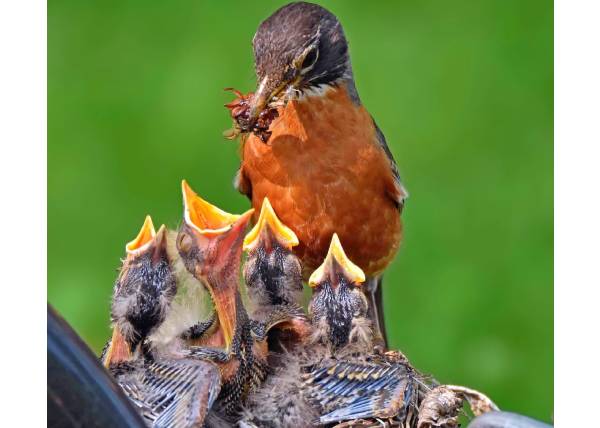
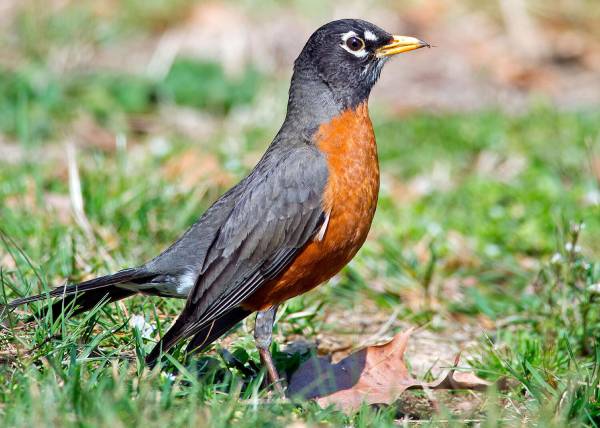
Robins (Turdis Migratorious) are classified as songbirds and can be found in the USA, Mexico, Europe, Russia and the United Kingdom. If the winters are harsh, robins will migrate in late fall to warmer climates. Robins will live in woodlands and grassy areas that have bushes to hide in.
Robins are greyish brown with the mature birds having a red “tummy”. Male robins have the brightest red tummies. They are omnivores: eating earthworms, insects, nuts, seeds, fruits and berries. A mature robin can be 9 to 11 inches long from beak to tail. They can live up to 6 years in the wild.
Did you know:
Next time you are out in nature, listen for their beautiful calls and songs.
EASTERN SCREECH OWL
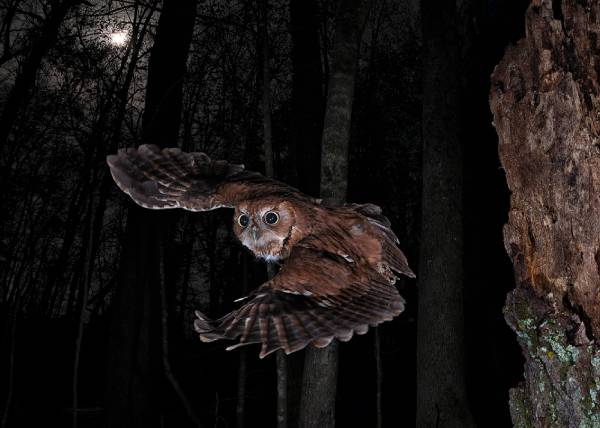
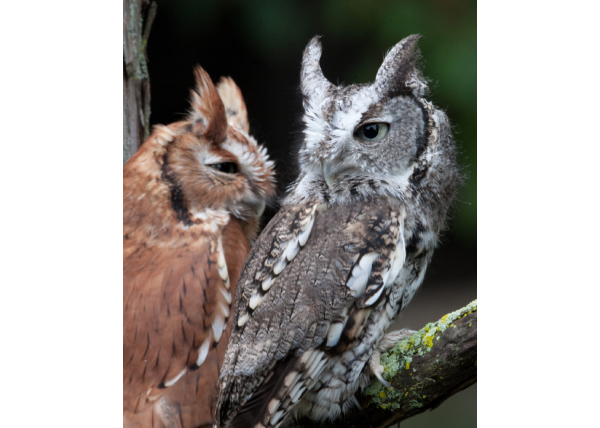
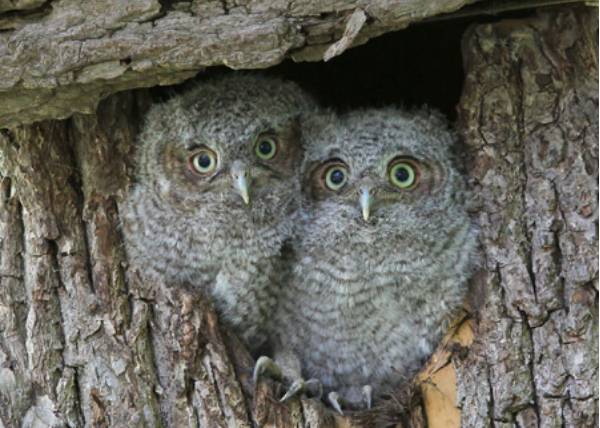
Sometimes called the Ghost Owl or Cat Owl, the Eastern Screech Owl (Megascops asio) can be found all along the eastern part of North America and into the midwest. It is the smallest of the owl family and can be reddish brown or grayish brown in color. Their beaks are grayish green in color. They live up to 7 years in the wild but have been known to live up to 20 years!
Eastern Screech Owls are about 7 to 9 inches tall and weigh about 4 to 8.5 ounces. Females are bigger than the males. Screech Owls are monogamous and mate for life. They breed mid March through April and lay three to eight eggs which hatch within 26 days.
Screech Owls nest in the cavities of trees and will nest in nest boxes built for them as well! Baby Screech Owl hatchlings fight fiercely for the food that mom and dad bring back to the nest, even to the extent of sometimes killing the smaller sibling. This is called Siblicide.
Screech Owls eat mice, chipmunks, worms, insects, songbirds, moles, and bats. Once or twice a day, the Screech Owl will regurgitate up the feathers, fur, and bones of its prey in oval shaped pellets. Screech Owls have silent flight because of the flight feathers that are serrated at the tips of the wings which muffle sound. They can sneak up on prey without being heard! They are also nocturnal. In the daytime, they will hide in trees by staying close to the trunks or in cavities and are so camouflaged that they are very difficult to see.
When a Screech Owl is frightened, it sometimes will puff out it’s feathers to look bigger or even elongate their bodies and flatten their feathers so they look like a tree branch! When they do this, they even sway back and forth to mimic the natural motion of trees. Screech Owls have a great sense of hearing. They can even hear prey underneath heavy vegetation or snow. Their ears aren’t the only impressive aspect of the Screech Owl. They also have excellent vision at night. The Screech Owl is best known for it’s haunting call. It can sound like a cat or aa woman screaming.
THE GREAT BLUE HERON
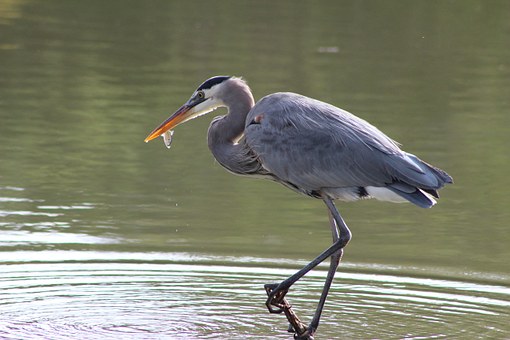

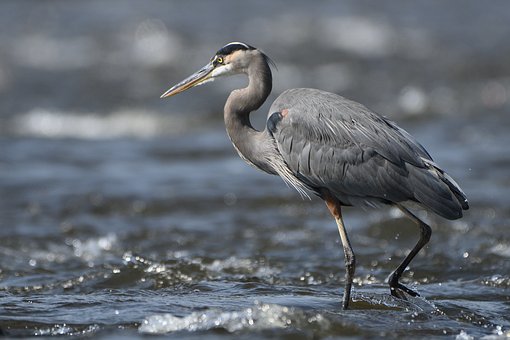
The Great Blue Heron is a resident bird of Georgia but can be found from Alaska all the way to South America. They are the largest of the heron family and a pleasure to watch as they fly and go about their daily lives.
At Historic Banning Mills, we are proud to have three nesting pair of Blue Herons. See below for some fun facts about them.
Blue Herons can have a wingspan of over six feet. They can stand three to four feet tall and weigh five to six pounds. The Blue Heron mainly nests in the tops of trees and can live together in large colonies called heronries of up to 500 nests! During the breeding season, the mating pair will stay together until the babies are grown. They will have different mates for the next season.
Male Blue Herons are larger than female Blue Herons. The male will bring sticks and present them to the female, who will then proceed to weave them into a platform type nest. She will then line the nest with moss, grasses, and other soft material. It can take up to two weeks to complete construction of the nest. They will return to the nest year after year to reuse it.
Female Blue Herons lay three to six eggs: plate blue in color. The eggs don’t hatch at the same time, meaning one of the babies will usually be stronger and more dominant, leading to a higher chance of survival. It takes twenty two months for a chick to mature before being ready to have its own chicks.
The Blue Heron is a very cautious bird and very wary of humans. The herons will abandon their nests if disturbed by much activity.
Blue Herons primarily eat fish but can be found eating salamanders, frogs, small mammals like voles and even small birds.
RED TAIL HAWK
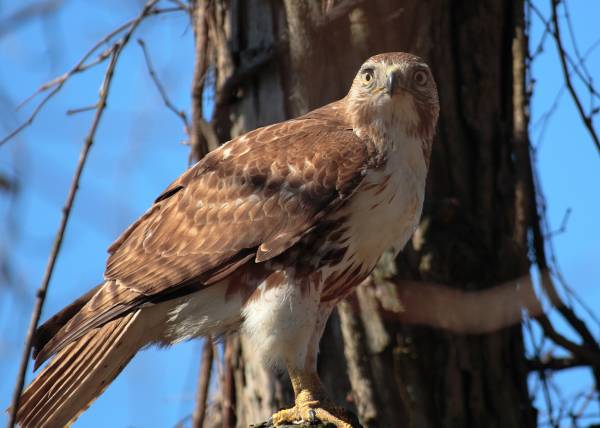
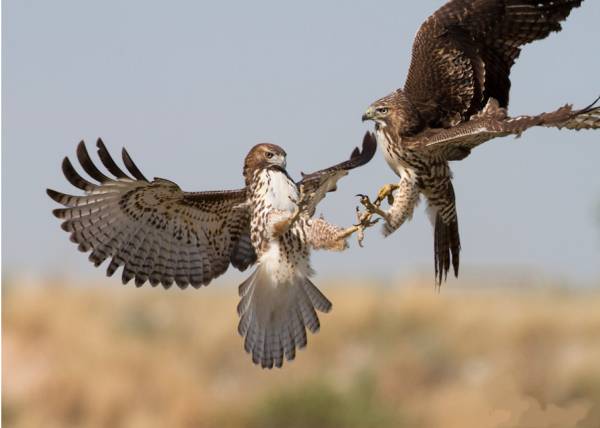

Red Tail Hawks live all over North America. Like many birds they are migratory and are also the second largest hawk species on the continent. They are dark brown with light colored underbellies. The Red Tail Hawk gets its name from its short wide tail that is warm red in color on top. The Red Tail Hawk can grow to have a wingspan of 3.5 to 4.8 feet in width and 18 to 26 inches long!
Red Tail Hawks can live up to 20 years in the wild and mate for life. Red Tail Hawks wait until they are at least 3 years old before seeking a mate. During mating season, the hawks will sometimes lock talons and hurtle towards the ground, breaking only just before the ground. They will lay one to three eggs and then feed the chicks from 6 to 10 weeks old before teaching the babies how to hunt on their own. They like to build nests in high places with commanding views.
They are known for amazing aerial displays in flight. During flight they can dive up to 120 miles per hour. Red Tail Hawks can’t move their eyes within their eye sockets, so they must move their heads to look around and spot prey. They like to hunt in open spaces and sometimes hunt in pairs. Red Tail Hawks eat small mammals, rodents, and snakes. They will even steal food from other birds. Did you know the Red Tail Hawk doesn’t need to eat everyday? They can go as long as one week in between meals! Once a Red Tail Hawk finds its home, they usually stay at the same location all their lives within a radius or 2 to 10 miles.
PILEATED WOODPECKER
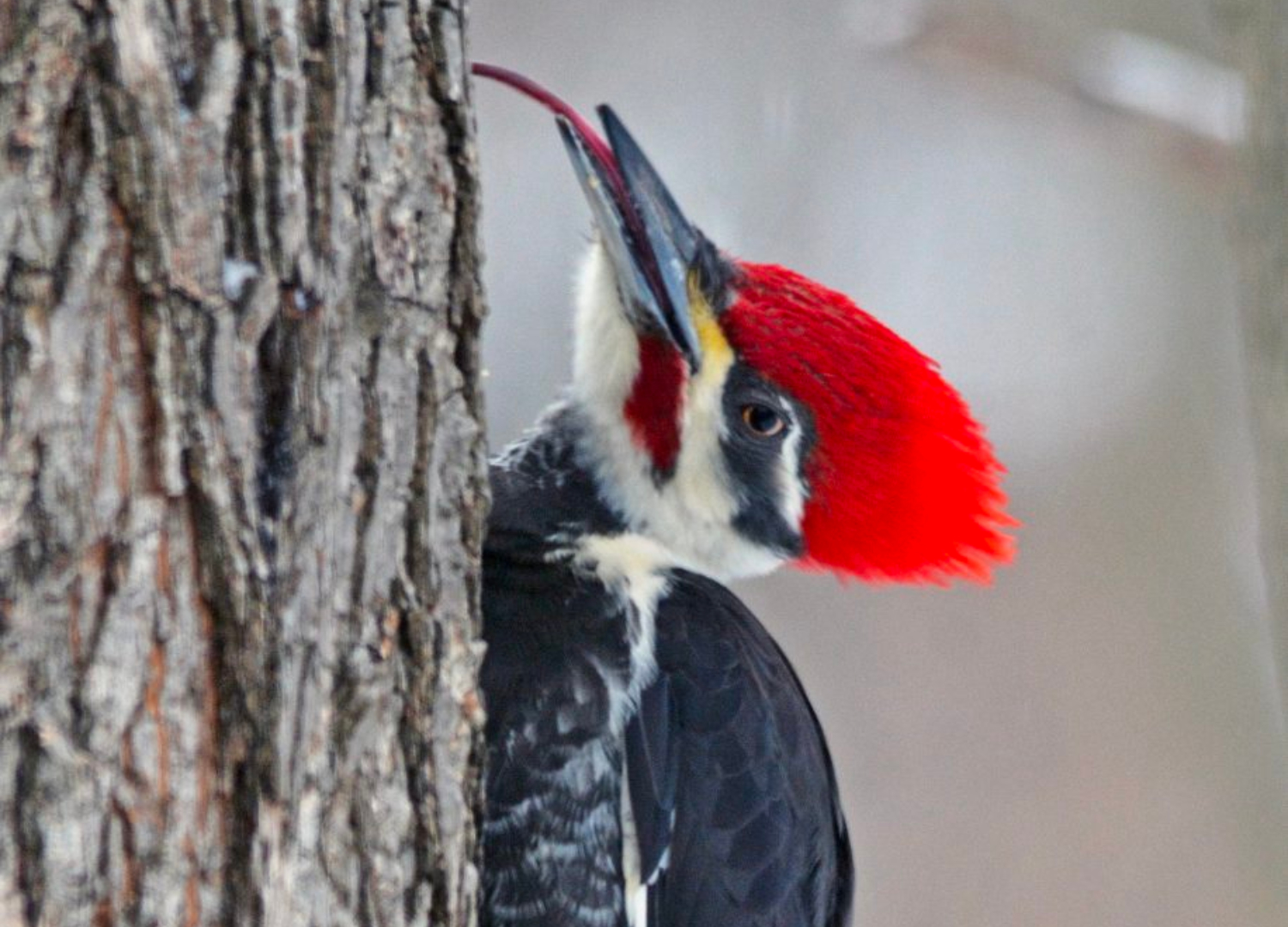
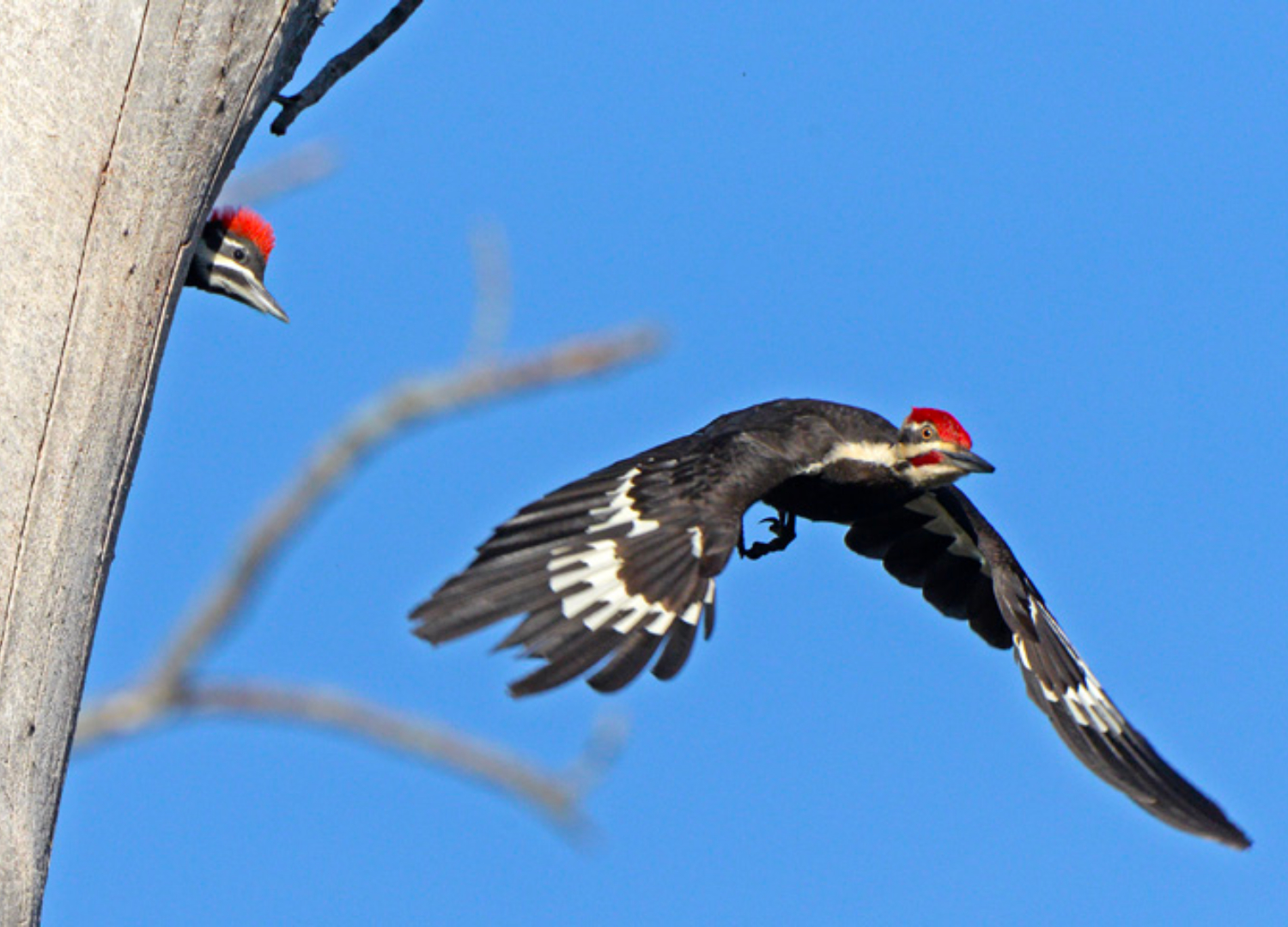

The Pileated Woodpecker (Dryocopus Pileatus) is the largest of the woodpecker family. They are native to North America and live in deciduous forests. They can reach 16 – 19 inches long with up to a 28 inch wingspan. The Pileated Woodpecker has an average lifespan, typically living 4 to 14 years in the wild.
Pileated Woodpeckers are monogamous, meaning they choose one mate. The pair will build a new nest every year in a dead tree. Each nest will have more than one opening to help escape from potential predators. The openings of their nests are always oval or oblong in shape. These woodpeckers lay between 2 and 5 eggs, which incubate 11 – 14 days. The Pileated Woodpecker then cares for the chicks for 18 – 30 days before the chicks are ready to leave the nest. When the Pileated Woodpeckers abandon their old nests, other birds and animals use them as instant, move-in-ready homes.
Like most woodpeckers, they eat insects, nuts, seeds, fruit, sap, and nectar. Did you know the Pileated Woodpecker doesn’t just tap its beak to find food? They make a drumming noise on different objects to communicate with each other, to attract each other, to play, and even for exercise. Those beaks of theirs can actually peck up to 20 times per second!
Wouldn’t that give you a terrible headache? The Pileated Woodpecker’s beak or bill is actually as long as their head. The bills help distribute the shock from pecking through their thick skulls. They also have really long tongues. Their tongue is twice as long as their skull and is sticky to help grab insects. When they aren’t using their tongue, it actually wraps around the back of their head between the skull and skin until they need it again! Their heads aren’t the only thing special about them however. They also have two back toes that allow them to stay upright on a tree and lean back as needed. Look closely at their bill and you may notice tiny feathers covering it. These tiny feathers help protect the woodpecker from getting wood splinters in its nose!
BLUE BIRDS

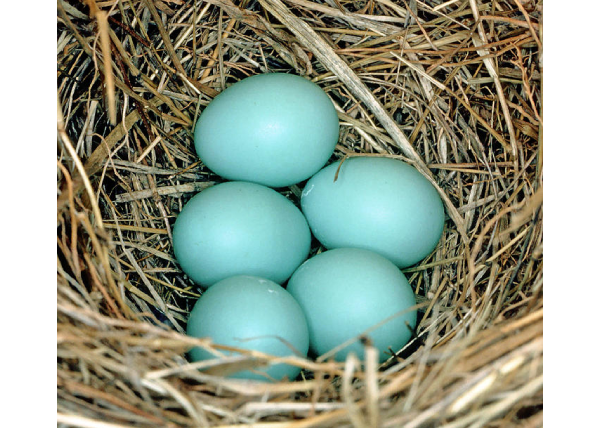
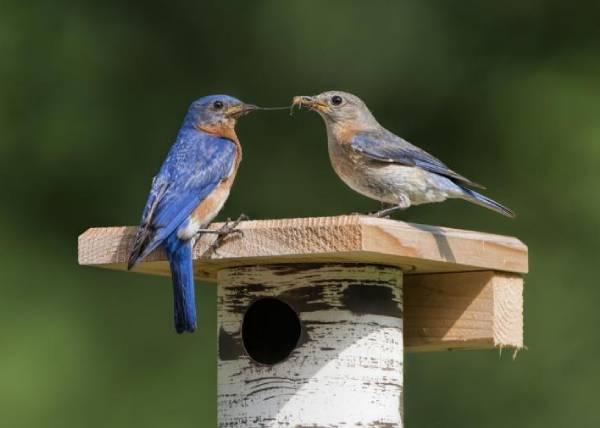
The Blue Bird (Sialia sialis) lives all throughout North America. The are most commonly found near grass or woodlands, parks, gardens, and orchards. Male Blue Birds can be easily identified by their dark blue back and wings and reddish chest and white belly. The females are grayish in color with a little blue on the tips of their wings and have an orange chest. Blue birds are a small bird, only 6 to 8.3 inches long and weigh between 0.9 to 1.2 oz. Even with their small proportions, Blue birds are pretty quick, with the ability to fly up to 17 mph.
The Blue Bird is monogamous and will stay with their mate through several breeding seasons. They also like to live in groups. Sometimes a Blue Bird community can include up to 100 birds! During mating season, Blue Birds lay between 3 to 7 pale blue eggs. The eggs hatch after only 13 to 16 days of being laid. Because of this quick process, a female Blue Bird can hatch two batches of eggs in one mating season. The female is also the only one that will incubate the eggs during this time. Blue Birds like to have cozy nests. They build them out of grass, pine needles, fur, and twigs.
Blue Birds have exceptional vision with the ability to spot an insect up to 60 feet away! Their favorite meals include insects, beetles, fruit, berries, frogs, and small snakes, but their favorite of all is the mealy worm!
NORTHERN CARDINAL

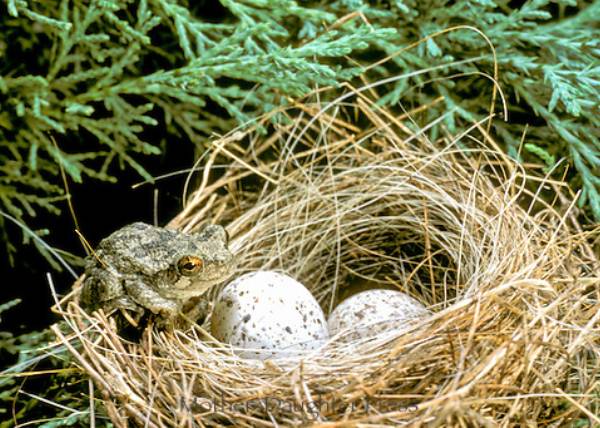

Located throughout the United States, the Cardinal (Cardinalis cardinalis) is a song bird with a wingspan of 9.8 to 12.2 inches in width and 8 to 9 inches long. They weight only 1.5 to 1.7 ounces. The male is usually red to bright red with a red orange beak, black mask on his face, and a red crest of feathers on his head. Female Cardinals are typically brown in color with some red throughout. If you see a Cardinal with a black beak it’s typically a juvenile.
The differing reds noted in the cardinal is dependent on what they eat. On rare occasions, a cardinal can be pure yellow or orange! The Cardinal was named after the red biretta and vestments of the Catholic Cardinals. Cardinals mainly eat seeds but will eat fruit, berries, and insects. Their favorite food is sunflower seeds.
Cardinals can live around 3 years. They make “open” nests no more than 10 feet off the ground. They do not nest in bird houses. Their nests are made of twigs, grass, and other plant materials. Cardinals usually have two broods per season. They lay between 3 and 5 eggs which hatch in 11 to 13 days. They also build new nests every year!
During mating and nesting seasons, the male Cardinal becomes territorial and may get aggressive. Cardinals are monogamous and usually mate for life. The male commonly shows affection to the female cardinal by feeding her a seed. Cardinals love to sing. The females can make up to 24 different tunes. What do you call a group of Cardinals? A College!
Cardinals and some other birds will over or near ant nests to pick up ants and place them all over their bodies. This is called anting. Scientists do not really know why they do this but some ants produce a formic acid which is believed to possibly kill lice or help to heal sores on the bird.
THE AMAZING BLACK VULTURE
Nature's Clean-Up Crew
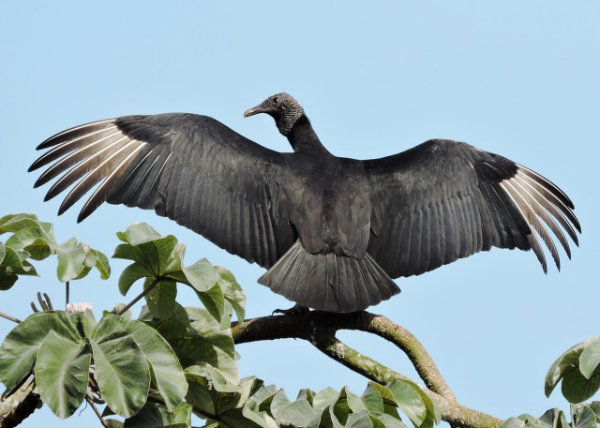
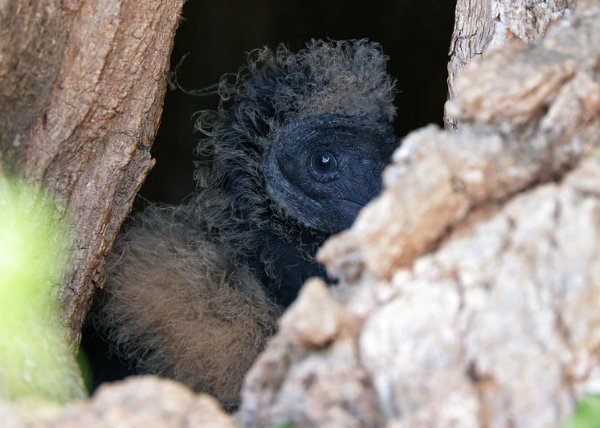
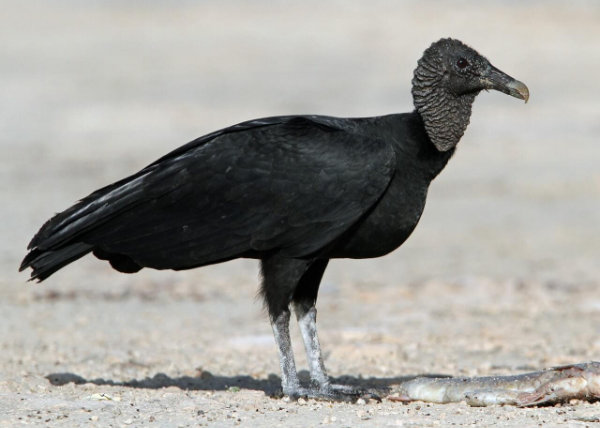
The black vulture (coragyps atratus) might not always steal the spotlight, but it's a bird with incredible talents and importance in our ecosystem. Here's what makes them stand out:
- Nature's Clean-Up Crew: Black vultures are like nature's own clean-up team. With their sharp eyesight, they swoop in to tidy up carcasses, preventing diseases from spreading. They even have a special ability to eat harmful bacteria such as anthrax and botulism spores. Black Vultures regulate their body temperature and sterilize their legs by pooping on their legs! When scared, they'll even throw up on potential threats. They can get pretty feisty when it comes to their meals, chasing away other animals. Plus, they'll follow their buddies, the Turkey Vultures, who have a better sense of smell, to find food.
- Social Butterflies: These birds love a good get-together. They hang out in big groups called wakes, where they do everything from resting to hunting together. Their social life is pretty complex, with leaders and teamwork during meals and mating season. You can spot them with their black bodies and grayish-black heads, and their bills are dark with a lighter tip. Black Vultures have white tips on their wings.
- Flying Pros: Black vultures are masters of the sky. They're pros at using warm air currents, called thermals, to glide around effortlessly. This helps them cover long distances while searching for food without using up too much energy. Talk about efficient!
- Meaningful Symbols: In different cultures, black vultures have different meanings. Some see them as symbols of purity and change, while others think of them as spooky omens of death. They're also known as the Black Buzzard and Carrion Crow.
- Not Pets: As cool as they are, black vultures aren't meant to be pets. Laws in most places protect them, ensuring they stay in the wild where they belong.
- Beak and Talons: Black vultures might not mean harm, but their sharp beaks and claws are built for tearing into carcasses. So, handling them without proper training can be risky.
- Tricky Diet: Their diet of carrion (aka dead animals) isn't something you can replicate at home. Providing the right food would be tough and could make them sick.
- Love and Family: While they don't mate for life, black vultures form strong pairs during breeding season, working together to raise their chicks. They don't bother with nests, just lay their eggs on the ground or in abandoned buildings. The female will lay one to two eggs which are a pale green to bluish white color with brown splotches. The babies get their meals from mom and dad through regurgitation.
While they might not be the most glamorous birds, black vultures sure have their own unique charm and vital role to play in keeping our environment healthy
GREAT HORNED OWL
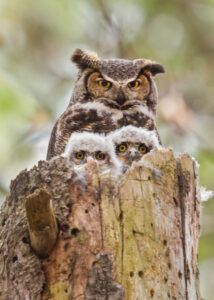
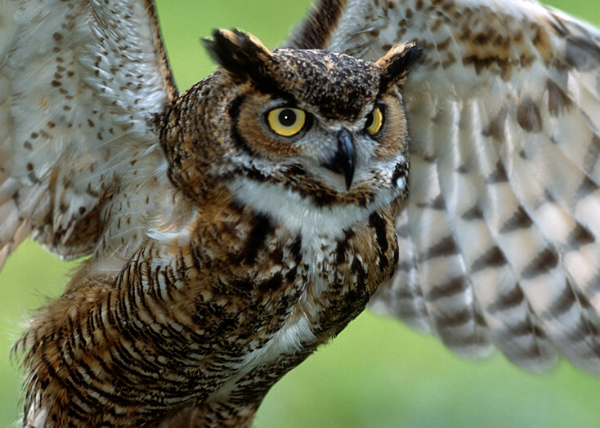
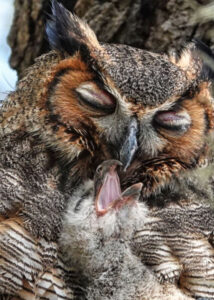
If you live in North America, you might just go out one night and here a HOO Hoo Hoo coming from the woods. If so, you may be hearing a Great Horned Owl (Bubo virginianus).
The Great Horned Owl (GHO) lives in North, Central and South Americas. And though you may be lucky enough to hear one, it is rare to see one in the wild. They are a large owl species with wingspans up to 5 feet. They can weigh anywhere from 2 to 4 lbs with the female always bigger and weighing more than the male. They can fly up to 40 mph!
Did you know:
The GHO is considered a good luck sign but superstition says that to see one is a sign of approaching death. The Creek Indians believed the GHO represented divine wisdom.
Because GHO are fierce and protect their territories with great vigor, they are sometimes called the tiger of the sky.
The GHO has excellent vision and an acute sense of hearing. They can even hear a mouse step on a twig 75 feet away from them! They have a poor sense of smell which helps a lot since one of their favorite foods are skunks! They also eat small mammals, reptiles, fish, amphibians and insects.
The GHO has excellent frontal vision but poor peripheral vision. Their eyes do not move so the owl has to swivel its head, even up to 270 degrees.
The GHO is mostly nocturnal.
The GHO does Not build nests but rather live in old abandoned nests, cliffs, caves or cavities in trees. Most will mate for life or at least several years with each other.
They will lay anywhere from 2 to 3 eggs and the babies are flying between 10 to 12 weeks of age. The babies will stay in the nest but begin to venture out onto tree branches before the start to fly. They are mature at 2 years old. They can live around 13 to 15 years in the wild and around 35 years in captivity.
The Oldest known GHO in the wild lived to be 28 years old in Ohio (2005).
The GHO can exert between 200 to 500 lbs. of pressure per square inch from its talons when attacking prey. They can lift up to 9 lbs. depending on their size. Watch out kitty cats!
The tufts on their heads are Not ears but help in the camouflage in trees. The tufts are called plumicorns.

